Company Introduction
EF Kids & Teens is the largest afterschool English education provider with 100s of centers in China. It is part of EF Education First, which is the largest private education company in the world. For over 25 years, EF has been working to change the way Chinese people see the world by teaching English to children aged 3 to 18. EF employs a unique teaching approach focused on developing soft skills students need to succeed academically and in life.
The Challenge
The vast majority of EF’s leads were generated through offline marketing channels such as offline promoters and events. However, as the leads were often captured on paper and manually entered into the system, the call centers struggled with low quality of the leads and often had to call several times before they would be able to speak to someone on the phone. Other than phone or text message, EF had no other way to communicate with leads that they had spoken with.
The Solution
After a thorough evaluation of the current state through one-on-one interviews, data analysis and observation, our team designed a three-proned strategy for EF to increase the conversion rates in its offline marketing channels: (1) WeChat Mini-programs, (2) Call Center Re-engineering, and (3) Digital Funnel Management.
1. WeChat Mini-programs
Offline marketing was a leaky basket.
- Lead details captured on paper were often inaccurate and took up to 20 days to process
- Major overhead in processing 10.000s leads every day
- 140% Turn-over rate in the offline Promoter team put a major strain on HR
We designed two WeChat mini-programs that fixed these issues at the root:
Promoter mini-program
- The entire lifecycle of the offline promoter was now encapsulated in this Mini-program: from onboarding and training, to lead collection and bonus calculation
- Personal QR code to associate promoter with the lead, allowing personal dashboards, auto bonus calculation and personalized customer journeys
- Referral program to reduce HR overhead in recruiting new promoters
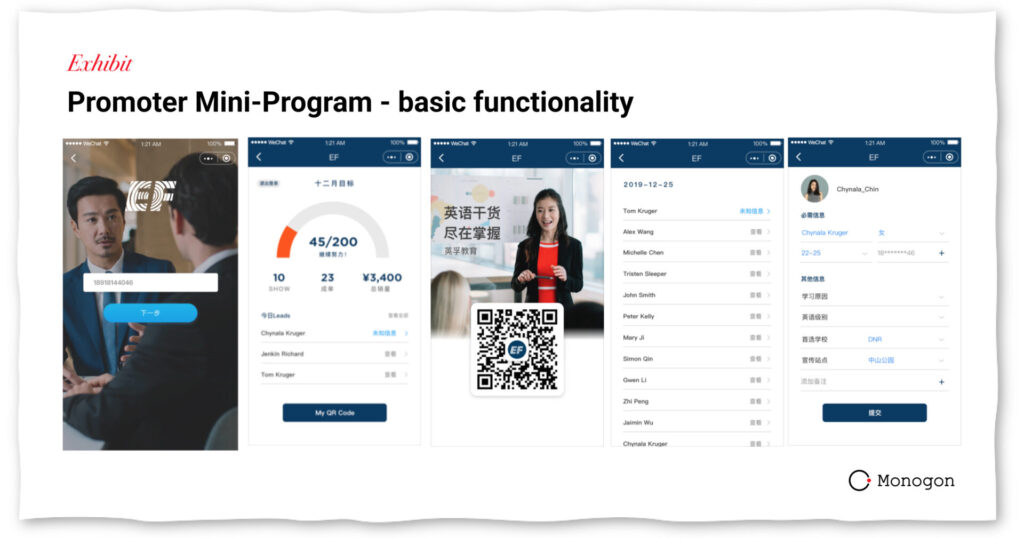
Prospective Customer Mini-program
- Validate parent phone number
- (Re-)schedule appointment online
- Personalized customer journey with content relevant to their interests
- Map that guides the parent to the nearest EF Center
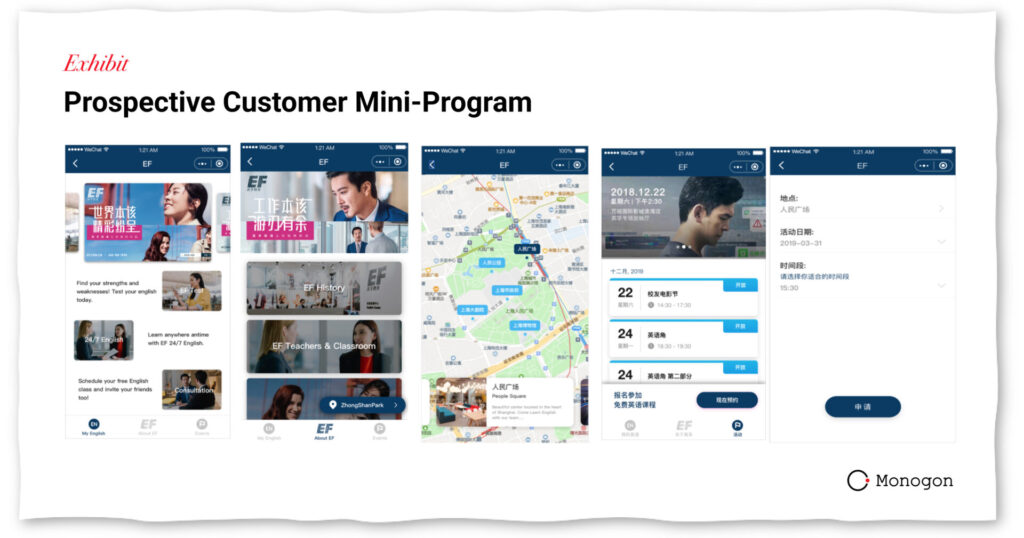
The customer journey
Putting these two mini-programs together is where the magic happened. The promoter would show the parent a QR code unique to that promoter. After scanning, the parent was asked to validate their phone number and follow their mini-program. The promoter could then capture the customer’s details, which were then immediately uploaded to Salesforce. Not long after bumping into the promoter, the customer would receive a phone call to schedule a sales consultation.
The promoter was kept up-to-date on the conversion of the customers they spoke with and their bonus was calculated automatically and displayed in their dashboard. After the parent scheduled a sales appointment at the school, they received reminder messages and could use a map that guided them to the center.
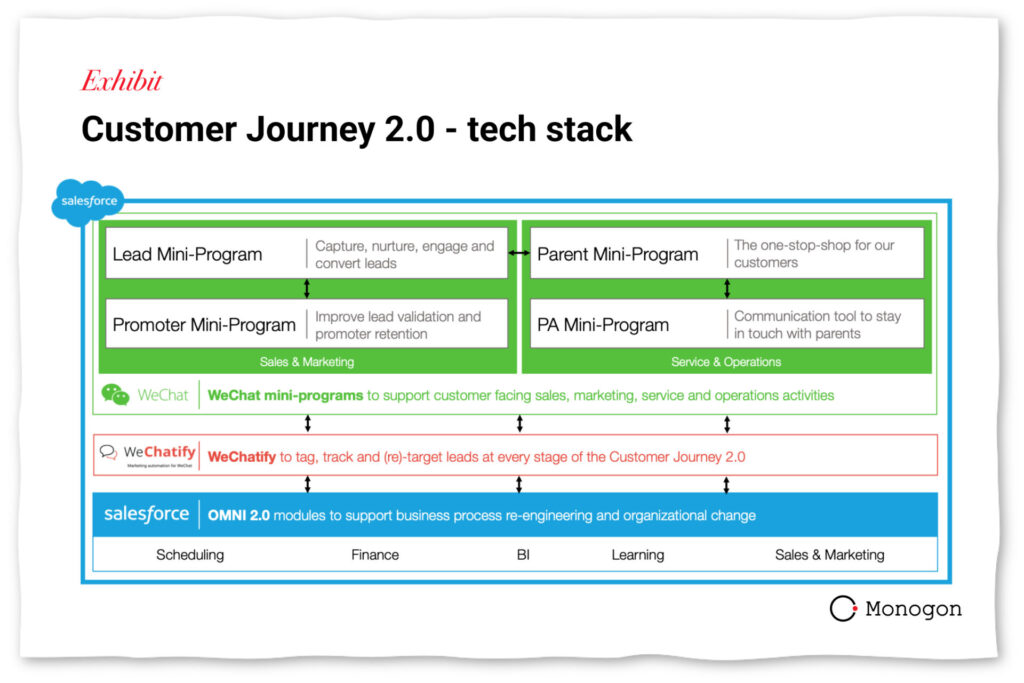
2. Call Center Re-engineering
By addressing EF’s top-of-the-funnel challenges, the problem was effectively pushed further down the funnel. Things that were not issues before, suddenly were holding EF back from unlocking growth.
- Leads were processed 8 days after capture, so there were no ‘sense of urgency’-metrics or processes, e.g. dispatching and dialing was all done manually
- The agent’s interface was not set-up to display the newly captured information and all quality assurance and performance tracking was done in Excel
- The call center was staffed with a 9-5 week-day rational, thus unnecessarily increasing time-to-first-contact for leads captured on the weekend
- Although the outbound sales organization was centralized, it was organized by city. This resulted in ‘pockets’ of utility. Some teams operated at 70% capacity, while others operated at 95% capacity.
With these challenges identified, we set out to design a solution:
- A new dialer that integrated with Salesforce, operating on a data architecture that could realize auto-dialing in as little as 10 seconds after capturing the data
- Comprehensive agent interface with role specific dashboards, 360 customer view and quality assurance built in using auto-transcription and AI sentiment analysis
- A new staffing model that reflected the volume of leads as they came in (meaning more staff on the weekend)
- Centralized organization model that removed the city-specific focus
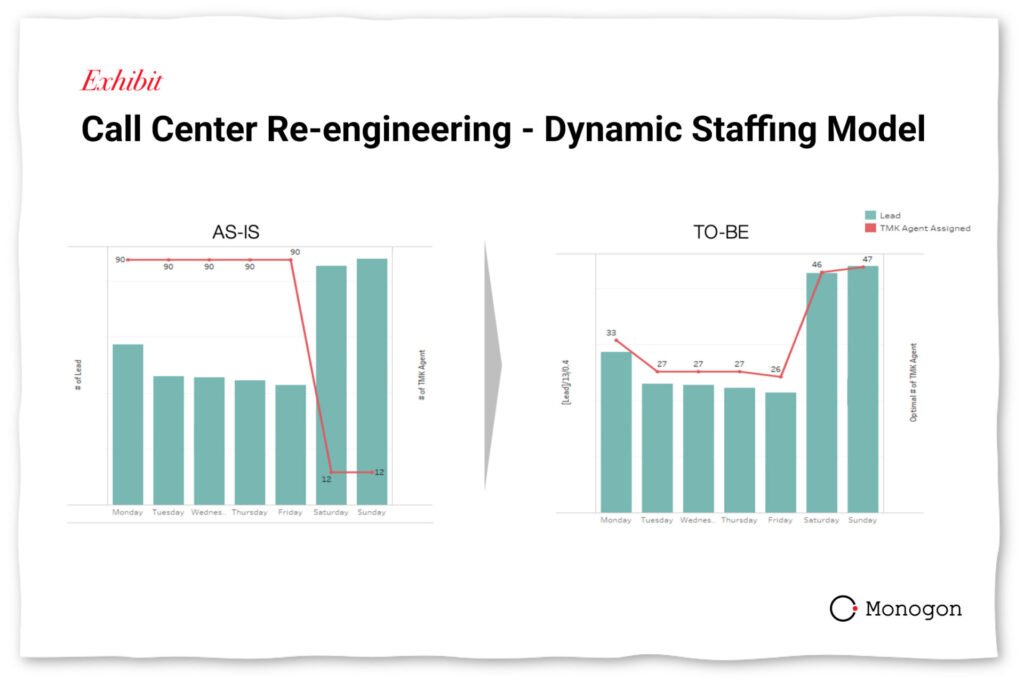
3. Digital Funnel Management
The next challenge after re-engineering the call center was to find a way to engage, nurture and retarget prospective customers. The current state of people, process and technology did not allow for this:
- Lead status definition did not allow for analytics or personalized follow-up journeys
- Unable to target customers with relevant content due to lack of audience segmentation
- Friction between sales and marketing due to conflicting ownership logic
- No holistic, end-to-end customer communication plan
We ran several workshops with the (tele-)marketing and sales organization to define the following:
- Redefined lead status logic that allowed for better funnel visibility and personalized journeys
- Audience segmentation allowing customer journeys targeted with relevant content
- Newly defined rules of ownership and hand-over logic between (tele-)marketing and sales
- Holistic customer communication plan per segment, with timing and logic
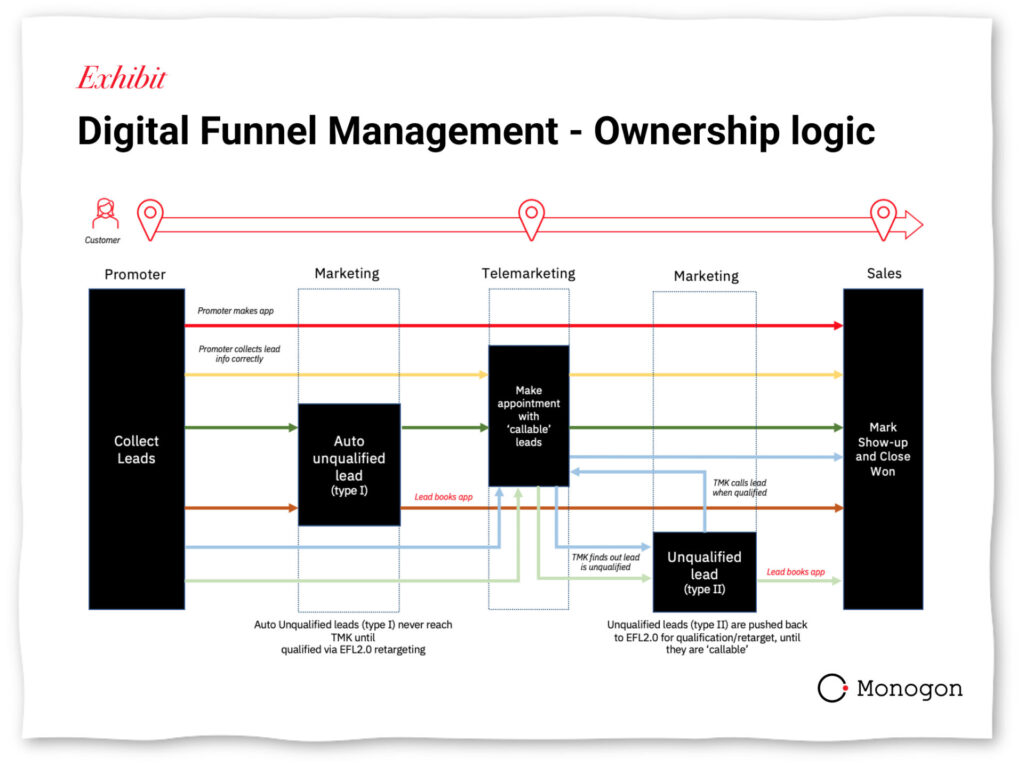
The Results
Invalid lead rate
As customers validated their phone number by signing up using WeChat, every lead captured had a valid phone number. At the same time, given new retargeting capabilities, the definition of “valid lead” could be expanded to include leads that would previously be invalided. As valid lead rate was an important metric used in marketing and sales, realizing this shift was a major cultural transformation.
Pick-up rate
By decreasing the time it took from lead capture to first phone call from 6 days to 6 hours, prospective customers still remembered the conversation with the offline promoters. Paired with a new dialer system that handled outbound dialing from ‘premium’ phone numbers, the pick-up rate on first call skyrocketed.
Revenue
The ability to reach out to higher quality leads at a much faster pace had a positive effect down the entire sales funnel. Conversion rates through the various stages of the funnel improved as conversations were happening faster and with more background information.




